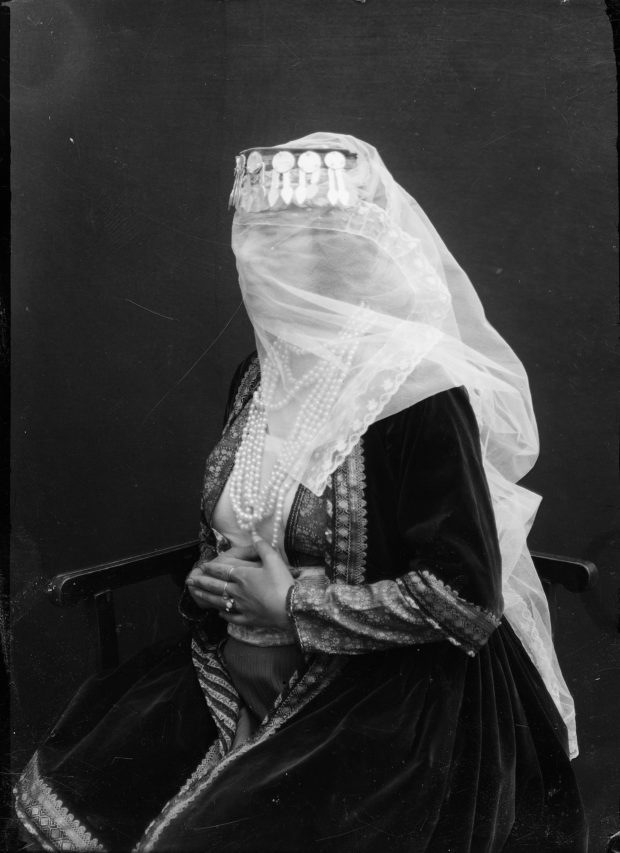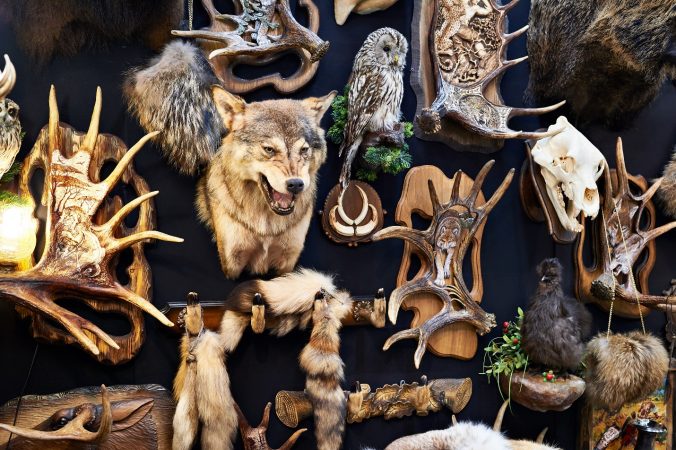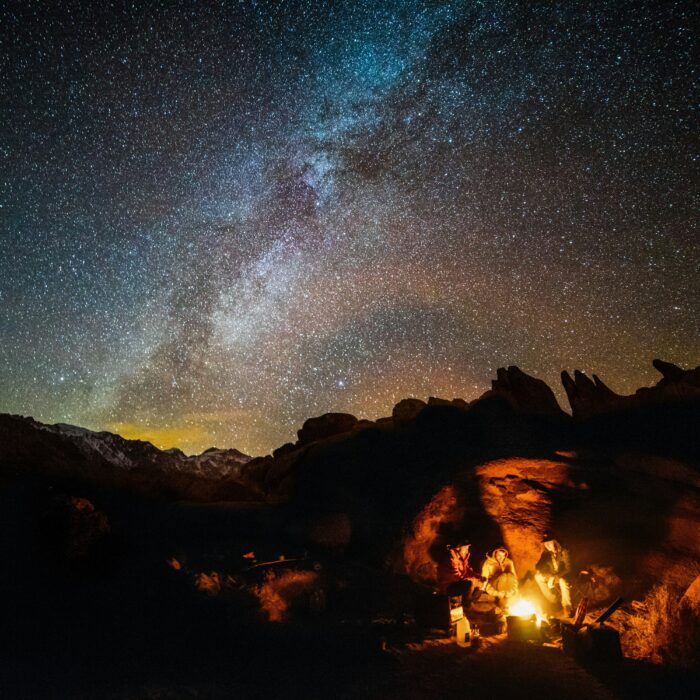You have no items in your cart. Want to get some nice things?
Go shopping
You look in the mirror and see all past, all future selves. You see your mother’s chin, your khaleh’s hair. You see that your cheeks will fall from here down to there and that one day you’ll have khanom joon’s jowls and maybe even agha bozorg’s flabby neck.
The other day you showed your friend a picture of Papa and she said, You have your father’s eyes. But he’s in profile in the photo and what she means is, You have your father’s left eye. Or really what she means is, I care about you.
All you could think, though, was how Papa used to turn his face away from the camera to hide the way his right eye stared off to the side. In English they call this “wall eye”, which you imagine like standing between two walls and trying to see both at the same time. But actually, if you look it up, it’s some Nordic thing to do with haze or film. It’s also the name of a kind of American fish. In French, they say un oeil qui dit “zut” à l’autre, and you’re laughing and imagining Papa’s right eye, just out of frame, listing to the side in a sort of permanent “fuck you”.
You look in the mirror and bring your face close to the glass. You bring it so close that your nose touches its reflection and your breath steams the pane. You remember how maman would pinch the tip of your nose. Such a pretty nose, she would say. No surgery for you.
All your aunties have the same nose, but not by family resemblance. Once upon a time, they surely all had lovely variations on those same big, curved noses that weigh down your little nephews’ faces. But since you can remember, it’s not genetics that they share but a doctor’s phone number. You can spot an Ossanloo nosefrom down the street. It reflects light off its little upturned tip and its Disneyfied little nostrils.
According to family lore, when Nuri came back with the bandage on her nose, everyone was shocked. There was enough nose on her to make three new ones, said amme joon. I bet the doctor had a field day. But afterwards, everyone agreed that she should have spent more money or done nothing at all. Ye pasho in var, ye pasho oonvar. They made a hash of her hooter, now she’s all stuffed up.
You look in the mirror and see all past, all future selves. You try to catch yourself by surprise, see yourself (just for a moment) like a stranger. You stalk your reflection in the street – in glass shopfronts, in the windows of cars – and the day you stumble or catch up, the murder will be silent and the feast luxurious.
You have desired and been desired, of this you are certain. How often the two coincide still eludes you. You host lust like a dinner guest, both invited and invasive. You lay the table with your best china, with spotless napkins and floral arrangements. You eat and drink well in each other’s company. The conversation is flavoured with wit and innuendo. You wait until the door is closed, and only when you’re all alone do you return to the scene of the supper to down the swill of wine at the bottom of the glasses, to smash the plates on the floor, to piss on the table.
You’re not insensible to the compliment of leering faces and lolling tongues. Alone in the street, or late at night, the terror that fills you when you see a strange figure is replaced with a perverse disappointment when you pass unnoticed. Fear and flattery, a horror within yourself that catches in the throat, that chokes like hair in the drain. A horror that lingers like dirty dishes, that rusts and rots like pots stacked in the sink.
You want to be: intimidating, approachable, sexy, terrifying. You want to smear your lipstick on your teeth. You want to bite, quick and fast – to draw blood. You want to draw blood and smear the blood on your mouth like lipstick and bare your red teeth and red lips. You will open your throat and wail a siren song. They will come to you with plundering eyes and you will shipwreck them, break their vessels, release their ghosts. They will come to you crying MUSE and run from you crying MONSTER.
In Persian culture there is a system of ritualised beauty in seven steps. It is called haft ghalam arayesh – the seven brushes of adornment, the calligraphy of the face. It now means something more like “dressed to the nines” (another numerological aesthetic). I hold your face in my hands. Sefidab for your skin, a moonlit white; sorkhab to stain your lips and cheeks; vasmeh drawn into and between your eyebrows, dark framing arches; sormeh around the eyes (I lick the wooden stopper and dip it in the vial); hana on your fingernails and hands, dying the tips of the fingers a burnt umber; band to thread and shape the hair which grows so soft and dark along your lip and brow bone; a single khal to dot your cheek, the final mark of the seventh stroke.
We find the beauty of the seven brushes in miniatures and in poetry. Here she is, again, in photographs. I pull the albums from the shelf. Let’s look at pictures of the royal wives. I’ll brush your hair and tell you: about Naser al-Din Shah and his camera. Some of the earliest photos of life in Iran come from the court of the Qajar king. I tell you how he set up a darkroom in Golestan Palace and employed the Russian, Antoin Sevruguin, as court photographer. How, alone with his wives and children, the shah took pictures of his own. We look at them together. See, here the women pose side by side, they are seated or standing, with instruments and at picnics. Their legs stick out from under short, ruffled skirts inspired by the Russian ballet.
You keep laughing as I hand them to you. You think that the bushy monobrows, thick ornamental moustaches, heavyset faces, and revealing attire could not have been better conceived by someone asked to represent the perfect opposite of everything considered beautiful in the present day. You show them, bemused, to your friends and family. Confronted by this catalogue, they are convinced you are showing them images of men in drag. Like fat men in skirts! How will you comprehend that the rotund, hairy, bare-legged Anis al-Doleh, who appears in many portraits, was the king’s favourite wife – a woman so beautiful that thirteen men were said to have committed suicide, heartbroken by her rejection.
You look in the mirror and you see all past, all future selves. Sometimes you imagine that the mirror is watching you. It sees you at your most disgusting. It sees you squeezing blackheads from your chin, picking food from your teeth. It sees you gape as you apply mascara and wince as you tweeze your eyebrows.
You look in the mirror and imagine what would happen if you stopped plucking and shaving. You could sprout a nice monobrow – arched, like the poets say, as bows to an arrow. You could maybe muster a little moustache. Someone once said to you, A hairy woman is so sensual, so sexy.You pluck your eyebrows and your upper lip, shave your pits, wax your legs, bleach your arms. When you reached puberty you grew two scraggly chin hairs which always come back, no matter how many times you tear them out at the roots. You tried removing hair from the other bit too, but you came out in rashes. Now you only use scissors.
About Mina Odile
Mina Odile is originally from New York and received her BA and MSt in English from the University of Oxford, before moving to London last year. She teaches and writes, with work most recently published by Vol. 1 Brooklyn ('Deep Dive') and Polyester Zine ('Bitchcraft').




